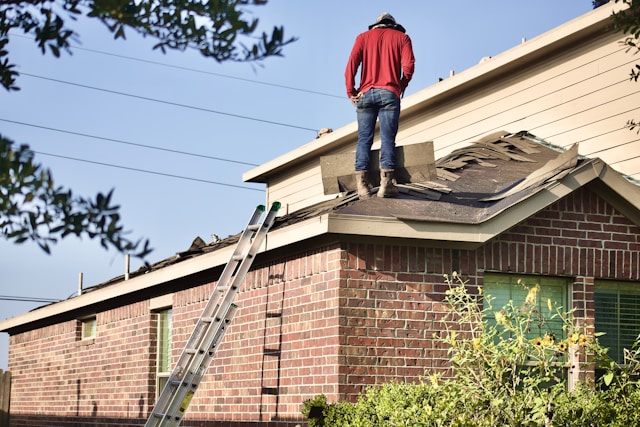Roof Safety Systems: Their Development and Significance in Residential Construction
Table of Contents:
- Introduction
- The Role of Roof Safety Systems
- Innovations in Roof Safety Technology
- How Roof Safety Systems Protect Homeowners and Workers
- Challenges Faced by the Roofing Industry
- Implementing a Safe Roof System: Steps and Considerations
Key Takeaways:
- Exploration of the historical advancements in roof safety systems.
- A detailed look at current technological interventions fostering safer roofing practices.
Introduction
In residential construction, ensuring rooftops’ safety and stability is a paramount concern. Over the years, advancements in roof safety systems have evolved to address the diverse challenges posed by weather conditions, structural integrity, and occupant well-being. As homes contend with the weight of snow during winter months, the significance of robust and reliable safety measures becomes even more pronounced. From innovative materials to strategic designs, the development of these systems underscores a commitment to meeting building codes and enhancing the overall longevity and resilience of residential structures.
The Role of Roof Safety Systems
Roof safety systems are a vital component of ensuring that the high altitudes faced by construction workers don’t result in high risks. These systems are an ensemble that typically features guardrails to prevent falls, safety nets to catch falling personnel or debris, and personal fall arrest systems to halt a fall mid-air. They are the unsung heroes of construction sites, providing a fallback should other safety measures fail. The standards and regulations surrounding roof safety are not just about compliance — they are about commitment to safety, ensuring peace of mind for homeowners, minimizing liability for builders, and, most importantly, preserving the lives of those who work many feet above the ground. The harmony of engineering, legal requirements, and practical application in these systems has become the cornerstone of a safety-based construction culture.
Innovations in Roof Safety Technology
The roofing industry is currently on the cusp of a technological renaissance. Innovations in materials and design, such as thermoplastics that grip under pressure and breathable, lightweight harnesses, have significantly raised the bar for safety equipment. New and creative solutions using the Internet of Things are beginning to appear; sensors may now warn employees about risks like shaky ground or compromised equipment integrity. Safety rigs that are simple to assemble and modular are reducing installation times without sacrificing durability. These significant changes attack the age-old problem of operating securely at heights rather than merely minor improvements.
How Roof Safety Systems Protect Homeowners and Workers
Roof safety systems represent more than a collection of safety harnesses and nets; they encapsulate a homeowner’s assurance and a worker’s trust. Implementing these systems significantly reduces the risk of accidents during construction and maintenance, warding off potential disasters that could levy emotional and financial tolls. For homeowners, this means protection against lawsuits and unexpected reconstruction costs. For workers, it means returning home to their families every evening without incident. Safety systems are a central aspect of worker training programs, sharpening the vigilance and know-how of workers to operate within the envelope of safety that these systems afford.
Challenges Faced by the Roofing Industry
Despite the advances in safety technology, the roofing industry faces many challenges. One of the primary issues lies in maintaining consistent safety practices across a fragmented industry. The degree of safety adherence can vary wildly from small-scale contractors to large construction firms. Economic pressure can sometimes lead to corners being cut, risking lives. The industry continuously battles against such complacency with a multi-pronged regulation, education, and advocacy approach. Sometimes, misunderstanding or lack of awareness about newer safety protocols also contributes to the hesitancy in their adoption. Industry-wide initiatives to centralize information and training can significantly alleviate these knowledge gaps.
Implementing a Safe Roof System: Steps and Considerations
Implementing a comprehensive safety system begins with a blueprint that integrates safety into the very fabric of the roofing process. A proactive approach involves identifying potential risks before boots touch the roofing beams. It selects quality safety equipment that adheres to national and local standards. Once the hardware is in place, routine inspections and drills ensure equipment functions correctly and teams are proficient. This continuous loop of preparation, education, and validation forms the backbone of a robust safety culture that meticulously reduces the margin for error and accidents on the construction site.



